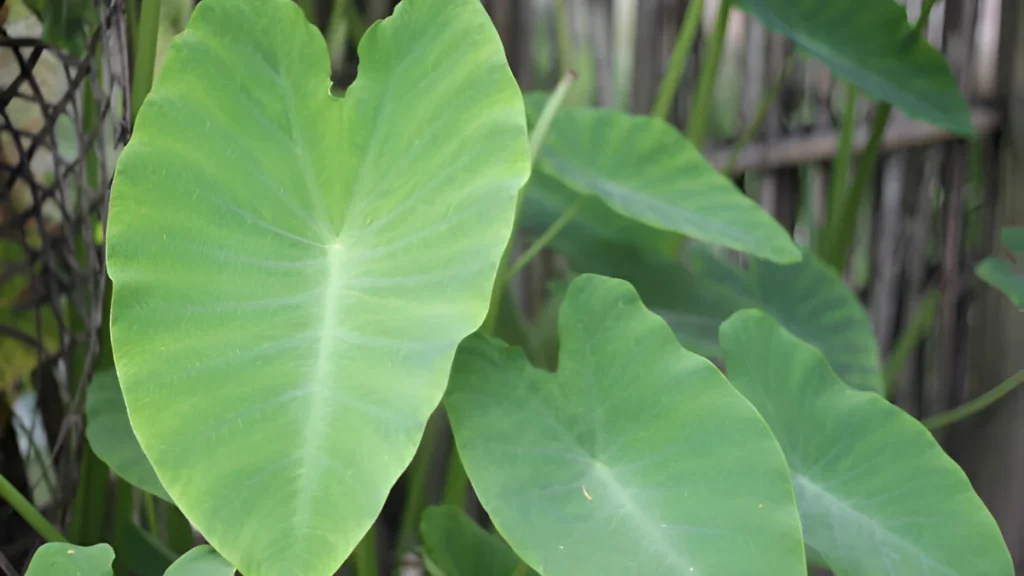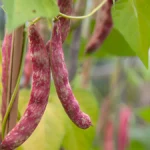Alocasia is the scientific name for the Elephant Ear Plant. The plant is native to Asia, Eastern Australia, and other tropical and subtropical countries. It likes warm, humid climates. They can be cultivated outside in warm climates or indoors as houseplants. During the summer, gardeners in milder areas frequently relocate them outdoors. These are poisonous if consumed, therefore it’s crucial to keep them out of the hands of young children and dogs. This article goes into great length about taking care of and cultivating elephant ear plants.
Learn how to plant elephant ear bulbs:
Elephant ear plants require a moderate level of care, whether they are planted in a garden or as houseplants. For developing elephant ears, these are the primary maintenance needs.
- Based on the amount of shade or sun exposure in your area, choose a location. A minimum temperature of 70°F should be attained in the soil before planting the elephant ear plant outside. It may be necessary to work compost into the ground as a pre-planting step if the soil is rich and slightly acidic, as it prefers moist conditions.
- Create a hole for the lightbulb that is 4 to 6 inches deep. The tubers should be planted 4 inches deep. Maintain a minimum distance of 2 feet between smaller and larger types. To keep the soil always moist, water it frequently.
- Verify that the plant is at the same level as it was in its pot by placing it in the hole and replenishing it with soil. Apply a high-nitrogen fertilizer regularly to the elephant ear plant. To assist conserve moisture and control soil temperature, spread a layer of mulch around the base of the plant.

All about elephant ear plant care:
Some techniques you should be aware of include the growth and upkeep of elephant ear plants. These pointers will assist you in taking good care of it.
Proper watering:
- Elephant ear plants are a type of marsh plant that requires a lot of water. In six inches of standing water, the plants thrive. When the soil seems dry in the top two inches, water the plant. Avoid overwatering as this might lead to root rot. In warmer weather especially, water the soil frequently to keep it moist.
Apply fertilizer:
- The elephant ear Plant is a heavy feeder, much like many other large-leaved tropical plants. Throughout the growing season, use a water-soluble, high-nitrogen fertilizer every two to three weeks.
Pruning of elephant ear plant:
- When new growth is desired during the growing season, remove any yellowing or browning leaves. Trim the leaves close to the plant’s base two to three days after the first frost, being careful not to rip or tear the leaves. Periodically wipe leaves to maintain dust-free foliage.
Propagating elephant ears:
- Dividing the tubers is a frequent method for propagating elephant ear plants. Using a sterilized knife, split the tubers, then dry them inside. To check if the tuber is rotting, wrap it in paper, put it in a cardboard box, and store it in a cold cellar. If it is, trash it. Once the soil has warmed to a minimum of 70°F, plant the tubers in spring.
Potting and Repotting of elephant ear plant:
- For cultivating elephant ear plants, use sizable containers with enough drainage. When the tubers grow too large for the pot, repotting is required. To revitalize the plant, divide it and repot individual tubers in pots with new growing media.
Remedies for typical plant ailments and pests:
- Fungal leaf blight is the elephant ear plant disease that is most prevalent. Before the fungus spreads to the entire plant, remove infected collapsed leaves as soon as possible. Spider mite infestations can cause leaf drop and slowed growth, so check the plant frequently and take urgent corrective action if necessary. Apply insecticidal soap or horticultural oil to treat a severe infestation of spider mites.
Conclusion:
In conclusion, gardeners and plant enthusiasts often choose the elephant ear plant, which is a lovely and adaptable addition to any outdoor or interior area. It will quickly become a favorite in your collection thanks to its distinctive leaves and versatility. You may appreciate the sophisticated and exotic beauty of the elephant ear plant in your own house or garden according to the basic maintenance guidelines mentioned above.
Certainly! If you’d like to learn more, please consider following our WhatsApp Channel: Harvest Gardening
A frequently asked questions:
Q1. How to Grow elephant ear plant indoors?
A1. An indoor elephant ear plant does best in well-draining, loamy soil and requires bright, indirect light. Avoid placing the leaves on the windowsill since the sun can scorch them. For these indoor plants, the optimal temperature range is 65°F to 75°F.
Q2. What are the common types of elephant ear plants?
A2. Elephant ear plants come in three common varieties: Colocasia, Alocasia, and Xanthosoma. Every variety has distinct qualities and needs for growth.
Q3. How to propagate elephant ear plants?
A3. Divide the tubers or corms of elephant ear plants in the early spring, making sure that each section has at least one bud. Replant the divisions and maintain moisture in well-draining soil.
Q4. Why are the elephant ear plant leaves turning yellow?
A4. A plant may require less sunshine, water, or fertilizer if its leaves turn yellow. To solve the problem, trim off the yellow leaves and bide your time till they sprout again in the spring.
Q5. Are elephant ear plants perennials?
A5. Yes, elephant ear plants (Alocasia, Colocasia, and other species) are perennials. In warm climates, they can live year-round, but in colder climates, they might need to be dug up and kept for the winter.



